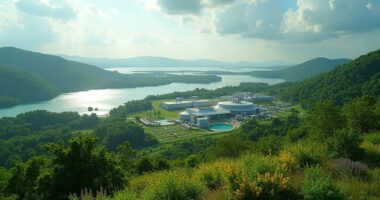Eni and Engie are tackling carbon offsets with distinct approaches. Eni emphasizes Natural Climate Solutions like forest restoration and caps offsets at a modest 5% of emissions reductions by 2050. Meanwhile, Engie diversifies with avoidance and removal offsets, boosting carbon storage through projects like reforestation. Both companies stress that offsets aren’t magic erasers for emissions but essential tools in a broader reduction strategy. Want to uncover more about their eco-friendly endeavors? The story gets even better!
Eni vs. Engie: Distinct Paths to Carbon Offsetting
In the ever-evolving landscape of corporate sustainability, Eni and Engie stand out like two old friends at a conference, each boasting a unique approach to carbon offset strategies.
These two energy giants have ramped up their carbon offset retirements substantially in 2024, making them among the largest players in their sector.
But what does that mean for the planet? Both companies view offsetting as a necessary tool for tackling those pesky emissions that are tough to eliminate internally.
They emphasize that offsetting is a complement to, not a replacement for, direct efforts like investing in renewable energy.
Engie, ever the articulate one, breaks down its offsets into two categories: avoidance offsets, which prevent emissions, and removal offsets, which capture and sequester emissions. Notably, these removal offsets often involve increasing carbon storage through activities such as afforestation and reforestation.
Eni, on the other hand, leans heavily on Natural Climate Solutions (NCS) such as forest restoration—think of it as nature’s way of saying, “I got this!”
Both firms prioritize high-quality, certified carbon credits that align with Sustainable Development Goals, ensuring their efforts are as genuine as a heartfelt apology.
Interestingly, Eni caps its offsetting at about 5% of its total emission reductions by 2050.
It’s like saying, “I’ll only cheat on my diet a little, thank you very much!”
This approach reflects a commitment to cutting emissions at the source, while Engie has recently ramped up its offset reliance substantially, signaling a strategic response to stricter regulations and stakeholder demands.
As they navigate this terrain, both companies recognize that offsets are not the silver bullet for decarbonization.
They aim to use offsets where technology hasn’t yet caught up, pairing purchases with investments in renewables and carbon capture.
Their strategies exemplify the growing trend of emissions reduction hierarchy where companies first reduce emissions before turning to offset solutions.
By 2050, Eni hopes to have 60 GW of renewables in its portfolio, hoping to reduce its reliance on fossil fuels, as the renewable energy sector represents the primary path forward for sustainability.
In the end, whether through forest conservation or innovative technologies, both Eni and Engie are working toward a cleaner future while keeping their eyes on the prize—sustainability.









